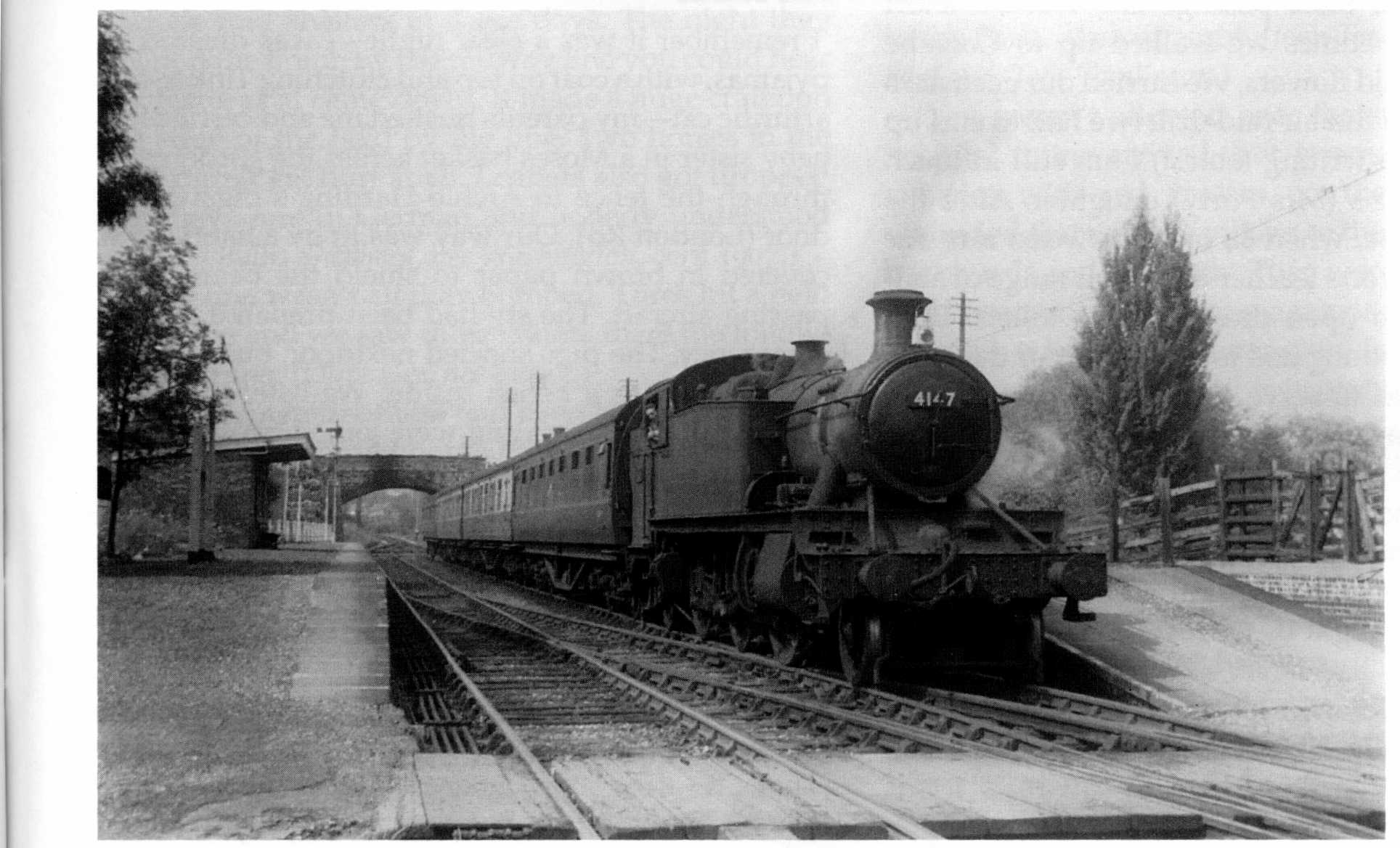The Railway
‘There was only the train at one time, no buses, but by the 1960s everyone had a car and there were plenty of buses. The train was losing money.
Contributed by Phyllis Shepherd (née Washington, born 1907), December 1999

‘My father, Arthur Bunce, was a platelayer, a linesman on the length between Tiddington and Horspath Halt. Twenty one years he had with GWR before injury. Every year he filled his cap with the first spring violets from the railway embankments and brought them home for my mother. He also brought home the rabbits killed by the train. We ate a lot of rabbit. When a pheasant was killed the men drew straws for it. There were plenty of snakes on the railway banks—one day they were cutting the grass on the slope by the Tunnel and down rolled a ball of mating snakes—the men fled! One snake even fell out of Dad’s jacket when he put it on after a lunch break.
‘In winter he used to go out ‘fogging’ with detonators and ‘snowing’ with a shovel. He’d get up at night in bad weather to go out and check the line. After the bomb fell in 1940 they had to shore up the line because of the hole by the embankment. They thought it was an attempt to bomb the rail bridge over the A4o and bring it down on the road as well. The A40 was called the ‘gateway to the Midlands’.
‘On Jubilee Day, 1935, there were no trains and the line was clear. Dad told me to get on my overcoat and we two children, Tommy White and myself, went with our two dads on the linesman’s trolley. We went from Wheatley to Tiddington turntable, back through to Horspath Halt where there was a turntable between Horspath and the Works, and then back to Wheatley. Right through the Tunnel we went and we needed our coats! The trolleys were kept in a shed just beyond the Signal Box. There was a Buster Keaton-type trolley there, too, with an up-and-down handle.
Contributed by Olive Gee, née Bunce, December 1999.
‘Big engines were everyday occurrences during the 40s and early 50s. Some trains worked through from Paddington to Oxford (and possibly beyond) in those days and everything except the very heaviest GWR engines (6ooos and 4700s) could be seen at Wheatley. At night there was a heavy traffic of freight, some of it hauled by 28XXs (heavy goods 2-8-0s) and I have seen ‘Castles’, ‘Stars’, ‘Saints’, ‘Halls’,
‘Granges’ all at Wheatley and travelled behind some of them. One magnificent day there was an accident on the Oxford-Didcot line and all through traffic to and from London and Oxford came up the line. There were three trains in Wheatley station at a time.
Contributed by Harry (D.H.) Cowan, December 1999.

I can remember the railway in the 1960’s, I went to school with the daughter of the last station master. Mr Kimber. We used to stand with him on the platform waiting and watching the trains into Oxford.
Every night around midnight we heard the train hooter as it left Wheatley station, the children loved travelling from Wheatley to Oxford on the train. Such good memories.
Used to see the trains across the road from the windows of Wheatley Secondary School. Regular passenger services had ended, but frieght still continued until about 1967. After that there were no more trains and I made up an attachment to enable my bicycle to ride the rails. Great fun for a year or so riding as far as Cowley in one direction and Thame in the other. Then in 1969 they started to remove the track.
We moved to a newly built bungalow on Old Road at Easter 1960. I worked in Fleet Street and my husband at the Oxford Mail. I travelled up to London via Wheatley and Princes Risborough, running along the railway track to the Station. There were only about 4 passengers on the train (children going to school in Thame I believe).
Often I would return on one of the two evening trains and my husband would board it to travel to Oxford to report an event. After our first son was born we would go to to Oxford to shop at Oxpens market ( all of us in the guard’s van).
When we moved to Kelly’s Road in 1965 the track ran behind our house and the whistle would sound a few times a day to warn anyone of the goods train crossing the track between Littleworth and Wheatley.